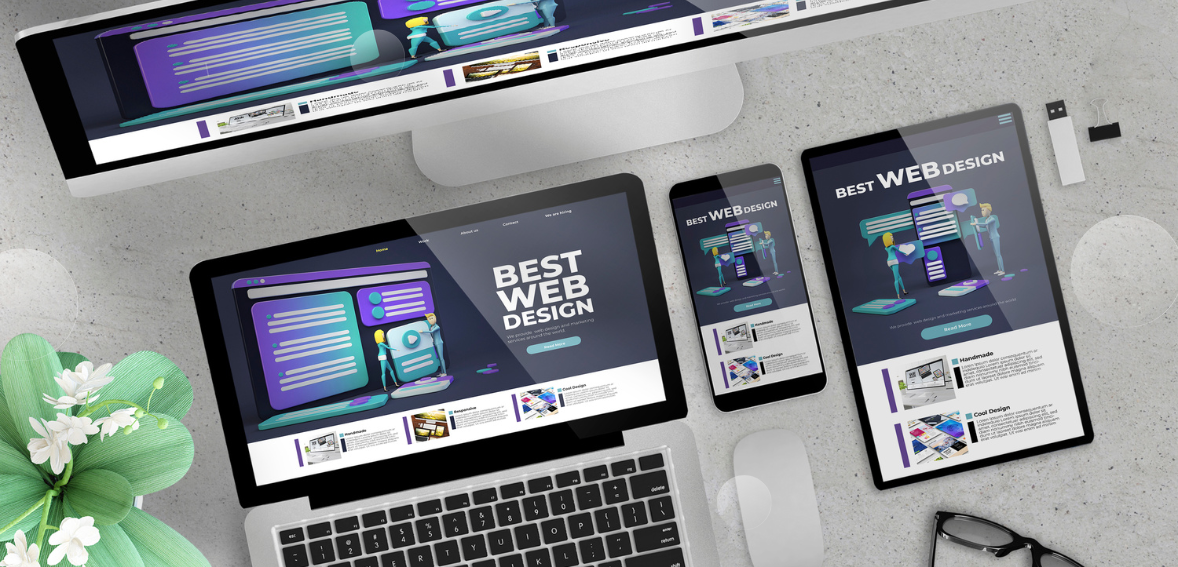Introduction to Micro-Interactions
In the digital world, micro-interactions refer to the small but impactful instances where users engage with a website, app, or device. Despite their size, these interactions are pivotal in shaping the overall user experience (UX). They contribute significantly by enhancing engagement and functionality levels. Whether it’s the animation of a button upon clicking, a notification alert, or a subtle sound effect, each micro-interaction adds depth and meaning to the user’s interaction journey.
They provide instant feedback, guide users through tasks, and evoke emotional responses, creating a more satisfying and memorable UX. These minor details create seamless and enjoyable user experiences across various digital platforms.
Importance of Micro-Interactions in User Experience (UX) Design
Micro-interactions transcend visual appeal; they are fundamental in crafting user experiences that leave lasting impressions. Through immediate feedback, they assist users in navigating tasks seamlessly, fostering a sense of accomplishment and satisfaction. Additionally, these subtle interactions evoke emotional responses, further deepening the user’s connection with the interface. By addressing user needs promptly and intuitively, micro-interactions enhance satisfaction and cultivate loyalty towards the product or service.
They serve as touchpoints that streamline interactions and imbue them with meaning and resonance. Ultimately, micro-interactions play a crucial role in building enduring relationships between users and digital platforms by prioritizing user satisfaction and emotional engagement.
Understanding the Elements of Micro-Interactions
Effective micro-interactions comprise four essential elements: triggers, rules, feedback, and loops. Triggers are the catalysts that kickstart an interaction, prompting a response from the system. Rules dictate how the interaction behaves, establishing parameters and guidelines for its execution. Feedback provides users with real-time information about the outcome of their actions, ensuring transparency and clarity. Loops dictate the duration and repetition of the interaction, determining when it ends or if it recurs.
Together, these components form the backbone of micro-interactions, ensuring that they are initiated smoothly and executed seamlessly, with users being kept informed every step of the way. This structured approach ensures that micro-interactions serve their purpose effectively, enhancing user experience and facilitating meaningful interactions with digital interfaces.
Crafting Effective Micro-Interactions
Creating impactful micro-interactions necessitates several key considerations. Firstly, establishing a clear purpose ensures that each interaction serves a specific function, contributing meaningfully to the overall user experience. Secondly, simplicity and intuitiveness are paramount, as overly complex interactions can confuse users and detract from usability. Prioritizing responsiveness and feedback ensures that users receive immediate and informative responses to their actions, enhancing engagement and satisfaction.
Finally, personalization tailors the interaction to individual user preferences and needs, enhancing usability and relevance. By adhering to these principles, designers can craft micro-interactions that strengthen usability and foster a deeper connection between users and the digital interface. This approach leads to more enjoyable, intuitive, and rewarding user experiences.
Examples of Successful Micro-Interactions
Social media giants like Facebook and Instagram leverage micro-interactions to keep users engaged and retained on their platforms. These micro-interactions include notifications for new likes, comments, or messages, providing instant gratification and encouraging users to stay active. Likewise, e-commerce sites optimize the shopping journey by incorporating micro-interactions, facilitating tasks like adding items to the cart or seamlessly completing transactions.
These subtle yet impactful interactions streamline the user experience, making it more intuitive and efficient. By employing micro-interactions effectively, social media platforms and e-commerce websites enhance user engagement, satisfaction, and retention rates. This strategic integration of micro-interactions underscores their significance in shaping user behavior and driving desired outcomes within digital ecosystems.
The Role of Micro-Interactions in Different Platforms
Micro-interactions enhance usability and delight users across many platforms and devices, including web design, mobile app development, and wearable technology. These subtle interactions contribute to a seamless user experience by providing instant feedback, guiding users through tasks, and creating a sense of engagement. In web design, micro-interactions can improve navigation and encourage exploration. In mobile app development, they enhance functionality and responsiveness.
Even in wearable technology, micro-interactions add layers of interaction and convenience. Regardless of the platform or device, integrating well-designed micro-interactions enhances usability, fosters user satisfaction, and ultimately leads to a more enjoyable and memorable experience across the digital landscape. This underscores the universal importance of micro-interactions in modern interface design.
Challenges and Considerations in Implementing Micro-Interactions
While micro-interactions offer numerous advantages, implementing them successfully poses several challenges. Technical limitations, such as platform constraints or compatibility issues, can hinder the seamless integration of micro-interactions into digital interfaces. Additionally, accommodating diverse user preferences requires careful consideration and flexibility in design choices to ensure inclusivity and accessibility. Moreover, maintaining consistency across various platforms and interfaces presents a significant challenge, as each may have unique design guidelines and interaction patterns.
Achieving coherence while adapting micro-interactions to different contexts and devices demands meticulous planning and testing. Despite these challenges, overcoming them is essential to leverage the full potential of micro-interactions in enhancing user experiences. By addressing technical constraints, catering to user preferences, and ensuring consistency, designers can create cohesive and engaging interfaces that maximize micro-interactions’s benefits across diverse digital environments.
Best Practices for Implementing Micro-Interactions
Businesses should adopt a multifaceted approach to navigate the challenges of implementing micro-interactions effectively. Firstly, conducting comprehensive user research provides valuable insights into user preferences, behaviors, and needs, guiding the design process. Secondly, fostering collaboration between designers and developers ensures that micro-interactions are visually appealing, technically feasible, and seamlessly integrated into the interface.
Additionally, prioritizing continuous refinement based on user feedback and data-driven insights allows for iterative improvements that align with user expectations and preferences. By combining these strategies, businesses can overcome technical constraints, address diverse user needs, and maintain consistency across platforms, ultimately creating compelling and user-centric experiences enhanced by well-executed micro-interactions. This approach fosters innovation, drives engagement, and strengthens brand loyalty in an ever-evolving digital landscape.
Measuring the Impact of Micro-Interactions
Measuring micro-interaction effectiveness entails a multifaceted approach that blends various evaluation methods. Key performance indicators (KPIs) serve as benchmarks for assessing micro-interactions success, tracking metrics like user engagement, retention rates, and conversion rates. Additionally, soliciting user feedback through surveys, interviews, and usability testing provides valuable insights into user satisfaction and preferences regarding micro-interactions.
Rigorous testing methodologies, such as A/B testing and analytics, allow quantitative analysis of different interaction designs to identify optimal solutions. By combining these approaches, businesses can gain a comprehensive understanding of micro-interactions impact on user experience and identify areas for improvement. This data-driven approach empowers designers to refine and optimize micro-interactions continuously, ensuring they align with user expectations and contribute positively to overall UX.
Future Trends in Micro-Interactions
Micro-interactions’ future is intertwined with emerging technologies like artificial intelligence (AI) and machine learning, presenting exciting possibilities for enhancing user experiences. By integrating AI and machine learning algorithms into micro-interactions, digital platforms can deliver users more immersive, interactive, and personalized experiences. These technologies enable systems to understand user behavior, preferences, and context in real time, allowing for dynamic and adaptive micro-interactions tailored to individual users.
AI-powered micro-interactions can elevate user engagement and satisfaction from anticipatory responses to predictive recommendations. Moreover, by leveraging AI and machine learning, businesses can glean valuable insights from user interactions, enabling continuous refinement and optimization of micro-interactions over time. Ultimately, the synergy between micro-interactions and emerging technologies promises to revolutionize how users interact with digital platforms, creating more intuitive, engaging, and impactful experiences.
Conclusion
Micro-interactions are a potent instrument for shaping user experiences that stand out in today’s fiercely competitive digital arena. Their ability to engage, enchant, and retain audiences underscores their importance in modern interface design. By grasping the significance of micro-interactions, honing their execution, and embracing emerging trends, businesses can harness their potential to enhance products and services. Leveraging micro-interactions effectively through subtle animations, responsive feedback, or personalized interactions can differentiate brands, foster loyalty, and drive success.
By prioritizing user-centric design and staying abreast of technological advancements, businesses can unlock the full potential of micro-interactions to create seamless and compelling user experiences that leave a lasting impression in the minds of consumers. In essence, micro-interactions represent a powerful ally in delivering exceptional digital experiences and achieving business objectives in an ever-evolving landscape.





